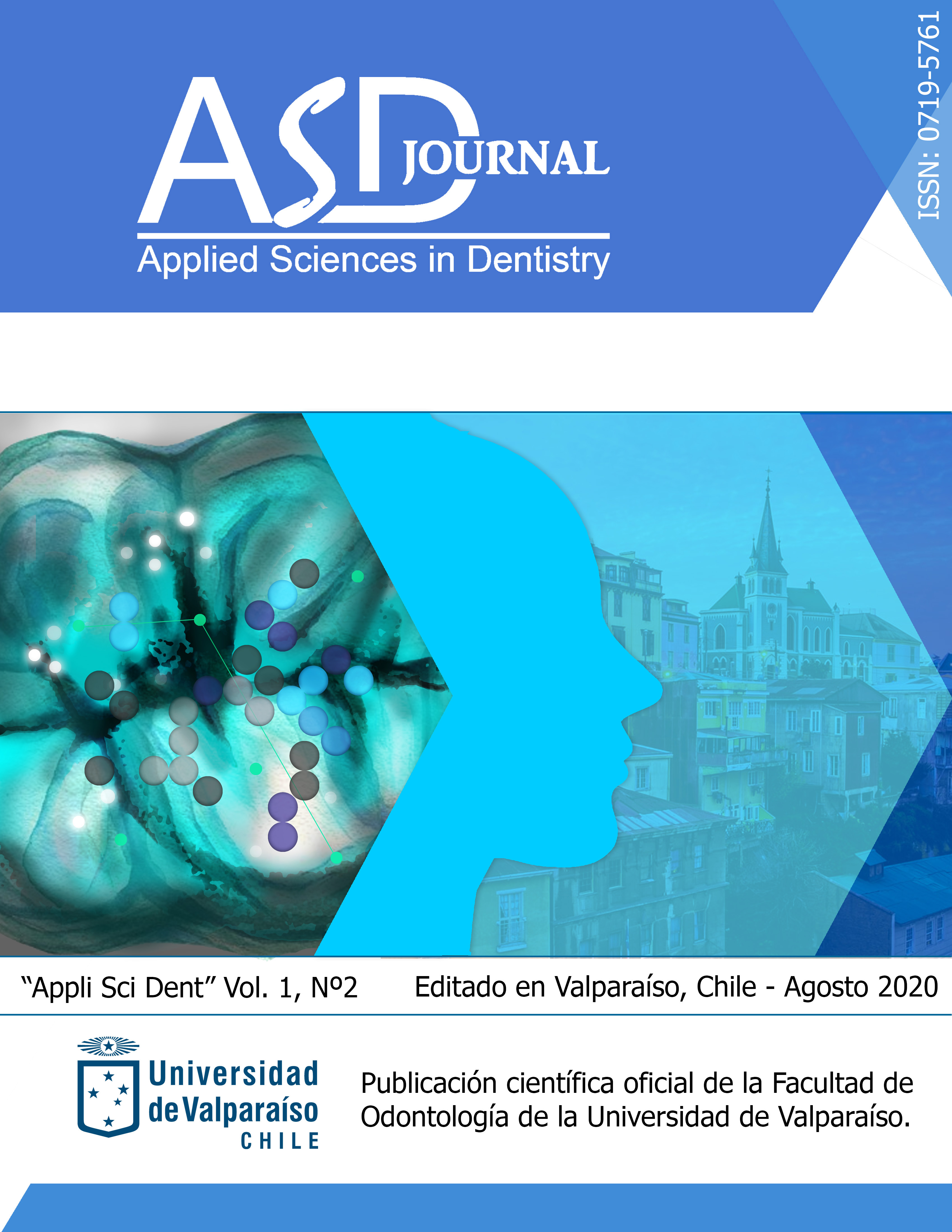PREVALENCE AND CLINICAL CHARACTERIZATION OF MOUTH BREATHING PATIENTS IN VIÑA DEL MAR AND QUILPUÉ, CHILE
DOI:
https://doi.org/10.22370/asd.2020.1.2.2403Keywords:
Mouth breathing, prevalence, nasal inhalation flowAbstract
Objective: This study aimed to clinically characterize and determine the prevalence of mouth breathing in the pediatric population.
Materials and methods: 383 students, aged 6 to 13 years, from public and private subsidized schools were analyzed. Clinical criteria were applied, and measurement of maximum nasal inhalation flow (PNIF) was performed to determine their breathing condition (Mouth, Nasal, or Mixed). Statistical analysis of the data was carried out through Stata SE 10.1, R-Cran 2.13.1, and Minitab 15.
Results: The prevalence of mouth breathers was 18,80%, mixed breathers 17,49%, and nasal breathers 63,71%. The most common facial characteristic was the presence of eye bags (82%) and dry lips (78%). The maximum nasal inhalation flow (PNIF) average registered in mouth breathing patients was 54,4 L/min, meanwhile in nasal breathing patients was 84,7 L/min.
Conclusion: Mouth-breathers are a relevant percentage of the examined population. Early intervention of pediatricians is transcendental for the diagnosis, derivation, and treatment of this syndrome in order to limit future complications.
Downloads
Downloads
Published
How to Cite
Issue
Section
License
Authors retain copyright and grant the journal right of first publication with the work simultaneously licensed under a Creative Commons Attribution 4.0 International License that allows others to share the work with an acknowledgment of the work's authorship and initial publication in this journal.
Authors are able to enter into separate, additional contractual arrangements for the non-exclusive distribution of the journal's published version of the work (e.g., post it to an institutional repository, in a journal or publish it in a book), with an acknowledgment of its initial publication in this journal.
Authors are encouraged to post their work online (e.g., in their institutional repositories or on their website) only after publication online.
When uploading, disseminating or repurposing Open Access publications, the journal should be clearly identified as the original source and proper citation information provided. In addition to the Version of Record (final published version), authors should deposit the URL/DOI of their published article in any repository.


